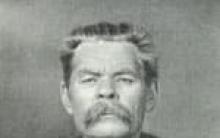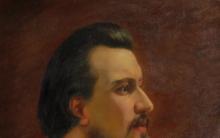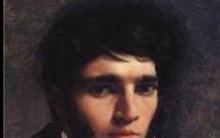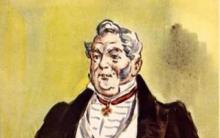All photos from the article
Hallmark of the century high tech is the ease with which beauty is replicated and originality is put on stream. But if not everyone is given to become an artist and write great canvases, then many can create unique images using simple technologies.
Wood is one of the suitable materials on which a photo or favorite drawing will look great. In addition to the fact that the quality of the product will remain unchanged for many years, it will be a kind of masterpiece or piece goods, depending on how you dispose of it.

The essence of technology
Don't be scared by such Clever words, like the technology of sublimation printing or graverton, because they are one and the same, therefore, it is already less incomprehensible. The technology is based on the principle of sublimation, when a substance under the influence of high temperature "jumps" from a gaseous state immediately into a solid, bypassing the wet stage.
Graverton technology allows you to transfer the pattern to wood, metal, glass, fabric, and the process itself takes place in a certain order:
- An image is printed on sublimation paper;
- The front side is applied to the object being processed;
- Placed in a heat press for a certain time.
Expose artistic processing can great amount things - from shoes, dishes, fabrics to corporate symbols, puzzles and all kinds of other unexpected things.
The main disadvantage of the graverton technology is the need for special equipment and its high price:
- sublimation printer(starting from 500 thousand rubles with kopecks);
- thermal transfer press(from 9 to 30 thousand rubles).

And since you want to transfer the drawing to a tree at home from time to time, it makes sense to acquire expensive equipment only if you put the matter on a grand scale.
We create for ourselves
With a minimum of tools, you can also figure out how to transfer an image to a tree, no worse than using high-tech equipment. Perhaps the most important thing is to decide on the topic, because it will be, oh, how difficult it is to erase the "nonsense".
There are several rules that will teach you how to transfer a drawing to a tree so that it looks correct:
- The work surface must be bright and clean;
- The direction of the wood fibers should not spoil the drawing, for example, oblique lines can add photos of extra wrinkles;
- The theme with words / numbers is printed in a mirror image (a photo editor will help to rotate the image);

- It is desirable to have a digital photograph for scanning with high image quality;
- In a wooden picture, the photo is always facing the tree, so we will not constantly remind you of this.
The first stage of work consists in thinking over two questions - for what purpose and what you will "sketch". So, what you get can be donated, used for decoration, hung on the wall in the form of a funny maxim, used for practical purposes.
An elegant vignette, composition or photograph can be used to decorate not only a keychain, a small sheet of plywood / boards, signs, but also doors, bed backs, window sills, chairs - anything that makes sense to decorate. We present to your attention a few simple, but effective ways how to transfer an image to a tree.

Method one - gratuitous
Free, because you can find on a computer and make prints on a laser printer at work or at a friend's place. There you can also prepare the board by sanding it with fine-grained paper (P 220) or (the staff always has auxiliary personnel - locksmiths and carpenters).
Getting started:
- find a pattern and increase to the required size, print;
- put the sheet on the board;
- iron with a hot iron.
Before transferring the picture to a tree, you can moisten the sheet with acetone so that the pigment goes off better, however, to the detriment of the home atmosphere. It is useful to cover your nose and mouth with a gauze bandage or handkerchief. Usually, this technology is suitable for the subsequent burning of the pattern with a special tool.

Note! Put the carbon paper on the board with the coloring side down, on top of the required drawing and trace with a pencil. The main thing is not to move the paper or carry it by hand, otherwise the board will get dirty. It makes sense if the drawing is small.
Method two - glue
In addition to high-precision technology, source code and a wooden canvas, you will need:
- ordinary PVA glue;
- solvent;
- fine-grained emery;
- varnish such as Dulux;
- roller;
- sponge / long knife;
- a bit of patience.
Note! Experienced masters advise to lighten the image slightly before transferring the photo to wood, because in the finished form the colors will be more saturated.
- degrease and / plywood;
- cover the surface of the photo with a continuous layer of glue;
- put the stained side on a tree;

- roll out the sheet with a roller in the manner of smoothing wallpaper, or swiping with the flat side of a knife;
- leave to dry for a day;
- moisten the sheet with a damp sponge;
- start slowly and carefully erase the paper with your own hands, or rather, with your fingers;
- let the work dry;
- varnish.
Method three - gel
From it you will learn how to transfer a drawing to a tree using an acrylic gel-medium. This modeling paste, used to create a relief surface, costs more than 500 rubles, but it is not worth saving, as well as using expired ones. According to the masters good product produced by the company "Raphael".
From tools and supplies you will need:
- photo and tree of the same size;
- gel medium and a brush to it;
- roller / knife / ruler;
- paraffin / matte glue used for decoupage;
- another paraffin brush.

The working instruction is in many ways similar to the previous one:
- Apply gel to the board with a brush. The layer should be not thick, but also without bald spots;
- a photograph is placed on the treated area and smoothed out, expelling air bubbles;
- leave overnight in a secluded place;
- roll up the paper, let it dry;
- cover with paraffin.
We indulge in translations
Wondering how to transfer a photo to wood without gel and glue? An alternative would be a blank decoupage film on which the photograph will be printed.
After getting wet, the substrate is pulled out from under the top film, leaving a juicy pattern in place.
For work, you will need a skin, white acrylic paint, a plate of water, cotton pads, paper napkins, brushes, a marker, patinated varnish.

- Sand the surface;
- Lightly thin the paint with water and apply the first layer, brushing along;
- The second layer, respectively, with transverse strokes. Allow to dry;
- Before transferring the picture to a tree, you need to lower it for half a minute in water at room temperature;
- Take out, attach to the surface and pull out the base;
- Remove excess moisture from the film with blotting movements;
- Let it dry and mask the flaws with a marker.
- Open with varnish.
Note! You can buy special decoupage napkins. With them, the question of how to transfer a drawing to a tree will not cause any particular difficulties.
In conclusion
The new possibilities of a wood surface used as a basis for a painting or photograph are unusual and evoke a lot of emotions. Familiar images look somewhat different than on paper - softer, more mysterious. Branded supplies will help to immortalize your work, which may outlive the paper version.
The video in this article shows an example of transferring an image to a tree.
If you have any questions about translating an image to a tree, you can ask in the comments to this article.
For beginners and those who are not smart.
I will tell you another time how to transfer a drawing from tracing paper to a matryoshka blank or to the hemispherical surface of the box lid. Now I'll show you to understand the process the simplest technique manual transfer of the drawing from tracing paper to cardboard.
The idea is simple. The transparency of the tracing paper allows you to copy a drawing from one piece of paper to another with sufficient accuracy, keeping the original size.
Why transfer a drawing at all if you can paint the original sketch with paints? Then, firstly, in this case, you save the watercolor paper from endless scratching with a pencil and abrasion with an eraser, while the sketch can be erased even to holes. Secondly, you can also copy fragments if some areas in the sketch seem redundant or redundant. Thirdly, if there is a need for re-layout, then the moment of transferring a sketch from tracing paper to paper is the most convenient.
The necessary tools are tracing paper and two pencils. One pencil is hard and sharpened (2H-4H), the second is as soft as possible (4M-6M) and it is not necessary to sharpen it. You can use charcoal instead of a soft pencil, but charcoal will add a lot of dirt to your drawing. An eraser is not desirable in this case.
So, the simplest drawing with the right technology carryover. We will transfer a photo from a magazine to cardboard.
1. Place the image on a flat surface and fix it, for example, with tape.
2. Put tracing paper over the image and also fix it.

3. We outline the main contours of the image, as well as all the details that are significant for us.


5. Turn the tracing paper back (while clean) side up.

6. Rubbing the back of the tracing paper with a visible pattern soft pencil... In the Foto graphite rod, not coal.


8. Attach the tracing paper to the cardboard with the pattern up and the rubbed graphite side down.


10. Remove the tracing paper, see the contours of the transferred image and a lot of dirt left over from the graphite.

Advice: To reduce the amount of graphite dirt, do not rub all the free space on the back of the tracing paper. You can rub only those areas where there are lines in the drawing.
Professional and most accurate approach: carefully trace the contour of the drawing with the softest pencil. Only contour without rubbing.
Unprofessional approach- use a carbon copy. Why unprofessional? Because traces from a carbon paper are practically not erased with an eraser.
Tag: Fine Arts
It's nice to turn ordinary things "like everyone else's", with a little effort, into your own, cozy, personalized. Good way- decorate them with an original pattern. And even if you consistently missed art lessons at school, and you draw a little worse than a fifth-grader, it doesn't matter. This simple method will allow you to decorate at least all textiles and wooden surfaces in the house. funny drawings... And please your friends with original gifts.

Authors of a popular resource among designers shutterstock offer to try simple home printing technology. It is available to every owner laser printer... Or someone who is not too lazy to go to the nearest copy center and print the desired drawing. This method will allow you to easily transfer the image to fabric or wood surface.

You will need:
Acetone (or a nail polish remover based on it);
Cotton pads;
Plastic card;
Scotch;
Ruler;
T-shirt / fabric / wooden surface to which the drawing will be transferred;
Desired image.
Step 1: print the picture on laser printer mirrored... An inkjet printer is a poor helper in this matter. does not guarantee even distribution of ink, which will be displayed on end result... The darker the original image, the better.

Step 2: lay down the sheet face down on a cloth or wood surface. It is advisable to fix it on one side with tape so that the picture "does not leave." Dampen a cotton ball or brush in acetone and wipe the back of the design thoroughly to keep the paper wet.

Step 3: take a plastic card and using it, like a scraper, go over the entire back of the drawing. It's like rubbing it. First from bottom to top, then from top to bottom, repeat several times. Do not press hard on the scraper to avoid tearing the print. The main rule is that all this time the paper with the image should be wet from acetone... This will help the design grab onto the fabric or wood.

Step 4: gently pull off the edge of the sheet with the image and evaluate how the process of "printing" goes. When the drawing is completely transferred, remove the paper.


Finish the drawing. Bend the sheet along the other axis and get complete drawing... And tracing paper with this pattern can be used many times. Place the tracing paper over the drawing. Place a sheet of tracing paper over the drawing and trace around it with a transfer pencil.
Whether you want to make the perfect drawing, or just quickly copy an image, drawing translation is the quickest easy way to 'carbon copy' an image.
Tracing paper is very thin paper, almost like wrapping paper, making it easy to see through. Place the image you would like to tracing on the table and secure the corners with duct tape. Using a pencil, carefully draw out the outlines of all the shapes in the image.
Remember to include any small parts that the picture may contain. Cover the back of the tracing paper with graphite. When you've finished tracing the image, peel off the duct tape and turn over the tracing paper. Using a soft lead pencil (like 6B or 8B), shade over the areas above any lines you drew on the other side of the tracing paper.
Take the paper you are copying the image onto and tape it to the table. Then turn the tracing paper over so it is right side up, and secure it over the drawing paper. Be careful not to rub the tracing paper too hard so that you don't smudge the graphite on the Whatman paper. When you do this, the graphite with which you shaded the underside of the tracing paper will be pressed onto the Whatman paper under pressure. To translate an image using carbon paper, you need three sheets of paper: the original image, carbon paper, and drawing paper.
Method 1 of 3: Using tracing paper
Using a very sharp pencil or pen, carefully trace the outline of each shape and component part of the image. Place the light box on a table (or on your lap, depending on your style) and place your original image on top of it. Secure the corners of the image with duct tape, and place the Whatman paper over the design. Trace the outlines of the image. Carefully trace around the drawing with a pencil, including all the main objects and shapes.
If so, turn on the lights again, complete them, and finish the drawing. Using tracing paper is the most cheap option, but it is the most time consuming and complex. But if you don't have one, then you can use a pencil and tracing paper, as described in the following video from Japanese engravers. Write to (ignel (woof) mail.ru, ICQ 50389649), indicating your nickname and the address from which you registered. Do not forget to look into the forum rules.
There are several ways to transfer a design to fabric.
According to this principle, we played tanks at school - on one side we put a bold point at the end of the muzzle, turn it over, and draw along the same point on the other side. To continue ... In my case, when the tracing paper is drawn from two sides, you can apply both normal and mirror images.
Astrolon is a synthetic tracing paper. After the drawing is copied and, if necessary, enlarged or reduced, you can start transferring it to the surface to be painted. There are many ways to accomplish this operation, which are preferable to use depending on the material to which the drawing is transferred.
But even in this case, the drawing should be transferred carefully, without leaning on it with the hand that holds the pencil. However, this method is not very convenient, since in any case the carbon copy stains the paper, which makes the image difficult to distinguish.
However, when using this technique, you need to remember that a mirror image of the picture is obtained. For the same purposes, you can use any blunt-pointed object, for example, the blunt side of the same pencil, with which the drawing is rubbed until it passes to the surface. When using both methods, it is advisable to fix the tracing paper, since it can move imperceptibly, due to which the integrity of the drawing will be violated.
It is punctured with a needle along the contour of the drawing, making small holes frequent enough - so that later the points can be connected with a line without significant distortion. If the drawing is applied to enamel or ceramics, red lead diluted with turpentine can be used.
Moreover, its use, in principle, does not matter on what paper the drawing is applied. Place the patterned tracing paper on the fabric, make sure it is in the correct position and pin to the fabric with pins, but only on one side. Finish the drawing. Copy paper is applied to the surface of the product, the transfer pattern is placed on top and encircled with a frame. To translate such a pattern, it is enough to put it on the fabric with the side on which the pattern is printed and press it down.
Needlewomen often have the question of how to transfer a drawing from paper to fabric with maximum efficiency and preservation of important details. Drawing the contours of the image will be required for embroidery - manual or machine. There are many ways to transfer a picture to matter, it is worth considering them in more detail.
Required materials and preparation
Depending on the ways in which the drawing is supposed to be translated, different devices may be required, Additional materials... Here's a rough list:
- carbon paper or tracing paper;
- thin cloth;
- simple pencil, chalk;
- needle;
- transfer pencil;
- pins;
- iron;
- lamp;
- glass;
- a printer;
- fabric and pattern.

In preparation, you should print the image. You can draw a drawing in any program on your computer that performs graphic images and prints them out. If the pictures are small, they are printed on one sheet.
All borders should be clear, bold, clearly visible - this will make it easier to transfer the pattern to the fabric. You can even artificially increase the contrast and saturation of the lines, if possible, remove light details from the picture.
Translation of drawing into matter
Below are the main methods by which the image is translated to the base.
Copy paper
The easiest way to translate a picture is based on the use of carbon paper. It comes in different colors:
- black;
- White;
- color.
It is necessary to select the color of the carbon copy taking into account the shade of the matter. It is easier to find dark paper on sale, white paper is rare. To translate a picture, put a carbon copy, on top - a printed blank. With a simple pencil circle the drawing, carefully clicking on the contours. You can prick the contours of the pattern with a needle - colored dots will remain on the fabric, copying the drawing.

A clear result cannot be achieved if the details of the drawing are small: they turn out to be blurry. The technique is suitable only for smooth fabric or burlap. On fuzzy, fluffy fabrics, the image will not be clear.
The disadvantages of the method include the high "staining" ability of carbon paper - usually ugly marks are visible on the fabric.
Cigarette paper
Tracing paper or tissue paper helps transfer the design onto the fabric without carbon paper. The method is used for thick fabrics - velvet, velor, shiny bases.
First, you need to transfer the drawing to tissue paper. Then the paper matrix is placed on top of the fabric, secured with safety pins (instead of them, you can take office clips). Then the drawing is stitched right on the tracing paper with neat stitches, the paper is torn off so as not to damage the threads. The embroidered drawing is ready.

Sprinkling
The decal technique is suitable for all types of fabrics - linen, cotton, silk, smooth or nap. There is no difference in the shade of the fabric - the base can be dark, light. Using the method, you can simultaneously translate a picture into several cuts of matter.
The order of work is as follows:
- Prepare the matrix. To do this, you need a board, which should be covered with felt and the required number of tracing paper sheets. Their maximum number is 6.
- Pin the drawing to the top tracing paper. Puncture the holes in the drawing with a needle as often as possible. The needle should be thick and the spacing between the holes should be equal. To work comfortably, the back of the sewing needle is stuck into the pencil, leaving a sharp tip. The pencil is much more comfortable to hold than a regular needle.
- Separate the matrices, lay them out one by one (fabric plus tracing paper), pin them off. Wipe each matrix from the side of the tracing paper with a solution of blue, kerosene, tooth powder. The solution will leave an imprint of the pattern on the fabric through the holes.
- Dry the fabric for an hour, remove the tracing paper before that. The matrix can not be thrown away, but the remains of the solution can be brushed off and saved.
- Draw the appeared outline of the picture or stitch it with a thread.
The solution for light and dark fabrics is prepared differently. In the first case, mix 100 g of purified kerosene, 10 g of blue, 2 g of tooth powder. For the second recipe, combine 100 g of kerosene, 10 g of powder without blueing. It is necessary to mix the product in a ceramic bowl.
Instead of tooth powder, you can use chalk for dark fabrics, and activated carbon for light fabrics. Some needlewomen simply sprinkle light-colored materials with blue without the use of kerosene.

Transparent fabric
On sale there are thin, transparent fabrics - non-woven, marquise, silk, veil, nylon, georgette, organza. They can also be used to translate a picture if you intend to make the main product from them.
To work, you need to put a drawing, secure the fabric with pins on top. The contours of the picture will be perfectly visible, so you can immediately draw from the front side on the fabric acrylic paints without a rough sketch. It is better to work on a thick wooden board, plywood.
Laser printer
For this purpose, you will have to purchase freezer paper. It is usually used to freeze food, but the material has long been adopted by needlewomen. On one side, the paper is smooth and can be easily ironed onto the fabric, leaving prints on it. You should prepare the main fabric on which the drawing will be made (preferably linen, cotton).
Operating procedure:
- Cut a sheet of freezer paper equal in size to A4.
- Iron the sheet with the shiny side to the fabric, iron all the corners well so that the freezer does not come off.
- Cut the fabric along the edges of the sheet so that no threads stick out (they can ruin the printer).
- Place the workpiece in the laser printer, making sure that the drawing comes out on the right side.
- Send the image to print (the printer may fail at first, then the procedure should be repeated).

Important! Always apply a preview before printing an image.
Solvent
You will need to print your design on heavy, glossy paper to prevent ink seeping through it. Then attach the corners of the drawing to the paper with needles, buttons. Prepare a cotton swab, wrap it with a cotton cloth, moisten it in solvent. Saturate paper lying on fabric with solvent.
To improve the result, attach the bottom of the spoon to the drawing, press well along the contour. The ink will seep onto the fabric, which will produce the same image.

other methods
If there is no carbon copy at home, you can try to translate the picture on the window - through the glass. Fix the fabric and the pattern with adhesive tape, then circle it with acrylic paints, a marker. A more "advanced" variation of the method is the use of a light plate.
Some craftswomen trim the outline of the drawing through tracing paper on a sewing machine. This will require some skill and experience, otherwise the image will be uneven. The process is complex and time consuming.
Another option is to use a pencil for translations. They transfer the mirrored drawing onto tracing paper, then apply it to the fabric, iron it with a lot of steam. Such pencils usually do not fit on synthetics, so you will have to use only linen or cotton fabrics.
An easy way to transfer your design is to use thermal transfer paper. It is bought in specialized online stores. The drawing is printed on a printer directly on such paper, then applied to the fabric, ironed with steam. The result will be much better if the printout is done in the workshop - the drawing will turn out to be juicy, it will not smear even after washing.
Resizing a picture
Sometimes you need to change the size of the picture for the fabric - to make it larger or smaller. To do this, the image is divided into approximately equal squares, and a grid is made on clean paper from the same number of squares, but of a larger (smaller) size. Then the drawing is transferred by hand along the lines that are taken from each square.
As a result, you will get a picture with the required parameters. It is best to break the drawing into many squares - this is how the finished drawing will be the most accurate. Then it can be transferred to the fabric in any convenient way.











Characteristics of Grinev in Pushkin's "The Captain's Daughter"
Characteristics of the main characters of the work War and Peace, Tolstoy
The first and second editions of "The Inspector
"War and Peace": characteristics of the main characters
Speech characteristics of the heroes of the play N